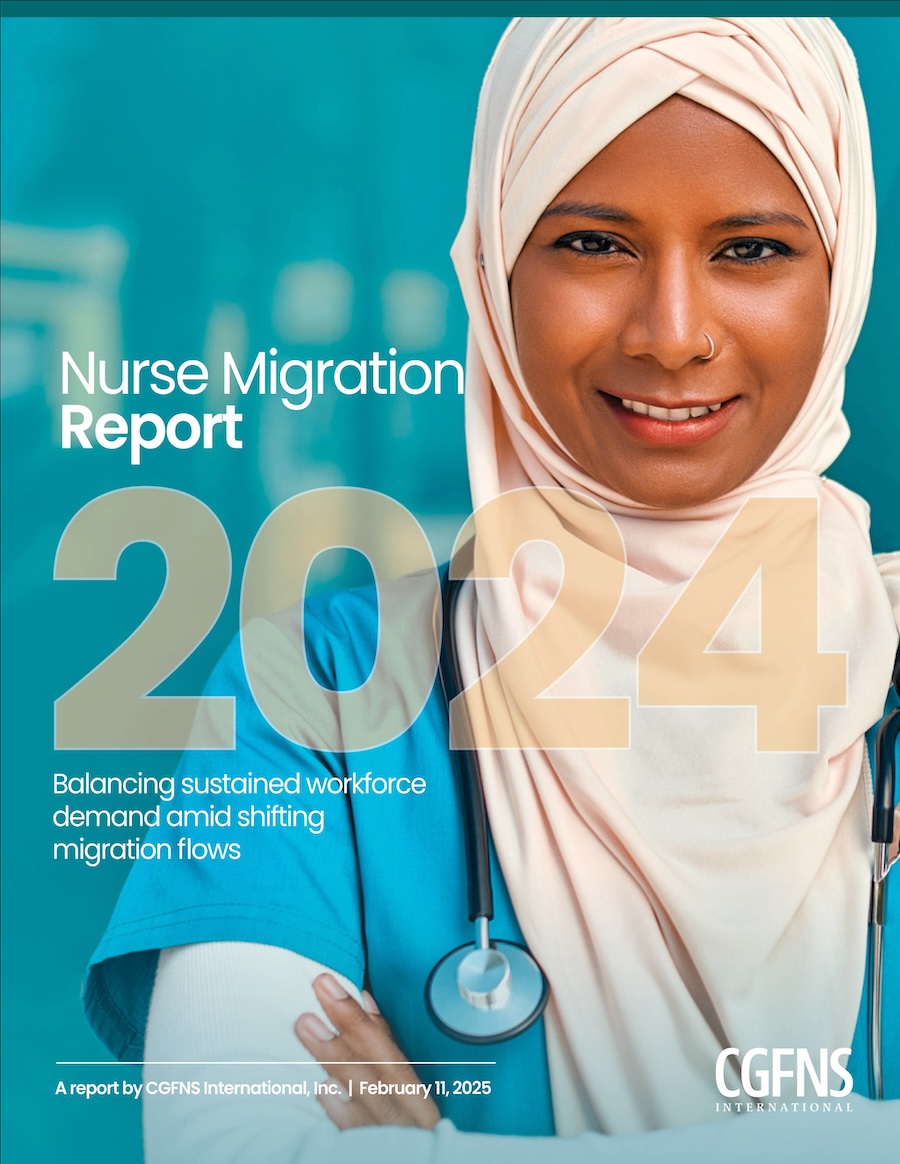CGFNS International Reports Nurse Migration Rates to the U.S. Remained High in 2024
Uncertain outlook for 2025 as new immigration policies are implemented
PHILADELPHIA, PENNSYLVANIA / ACCESS Newswire / February 11, 2025 /A new CGFNS International report indicates that a robust annual rate of nurse migration into the United States held steady in 2024 as healthcare systems continued to look to foreign-educated nurses to help address persistent staffing shortages.
However, in its 2024 Nurse Migration Report, the organization also said the current high rates were likely unsustainable amid persisting visa retrogression and caps on employment-based green cards for nurses, along with new immigration policies being implemented by the Trump Administration that will likely have further impact on visa availability and processing times.
CGFNS, a global health workforce non-profit that verifies credentials of healthcare professionals for immigration authorities and state licensing boards, reported that in fiscal year 2024 it received 24,733 applications for its VisaScreen® (VS) service. While this is a 4.6% drop from FY 2023, the organization noted application levels remain significantly higher than pre-pandemic figures, with the 2024 figure at nearly 200% above FY 2018.
Other key data from the report:
While VS certifications went to nurses from more than 100 countries in 2024, 92% were educated in one of the top 10 countries on the list.
The Philippines continued to account for more than 51% of VS certificates, followed by Canada with 8% and Kenya with 6.5%. There has been a slight shift in this distribution recently, with the Philippines dropping from 60% of the total last year, while Kenya, Nigeria, and Ghana have all showed considerable growth in their share.
Like countries of education, visa categories are also significantly concentrated, with 76% of VS certificates issued to those seeking permanent green cards (such as EB-3 visas), while TN (12%) and H1-B (11%) made up the only other significant categories.
"These figures confirm what others are seeing, that U.S. healthcare systems continue to depend on nurse immigrants to address persistent staffing shortages. Disruptions to this pipeline of qualified nurses would have far-reaching consequences, exacerbating workforce shortages, increasing patient care loads, and worsening nurse burnout," said Dr. Peter Preziosi, President and CEO of CGFNS. "This is a multilayered global challenge that demands collaborative and innovative solutions among source and receiving countries."
CGFNS International is approved by the U.S. Department of Homeland Security to satisfy federal credential screening requirements for occupational visas for nine categories of foreign-educated healthcare professionals.
To offer global context for the U.S. numbers, the report also analyzes worldwide migration of nurses and healthcare professionals, particularly as both source and destination countries continue to grapple with balancing the demand for skilled healthcare workers against the challenges of retaining their domestic workforces. It noted that some countries in Africa, including Zimbabwe and Ghana, have paused the release of certificates that are needed by nurses to emigrate, while Nigeria has introduced in-country service requirements that nurses must fulfill prior to migration. Other governments, such as Namibia, have pursued the pathway of creating incentives for nurses who choose to stay.
Download the 2024 Nurse Migration Report: Balancing sustained workforce demand amid shifting migration flows.
Contact Information
David St. John
dstjohn@cgfns.org
SOURCE: CGFNS International
View the original press release on ACCESS Newswire
© 2025 ACCESS Newswire. All Rights Reserved.



















